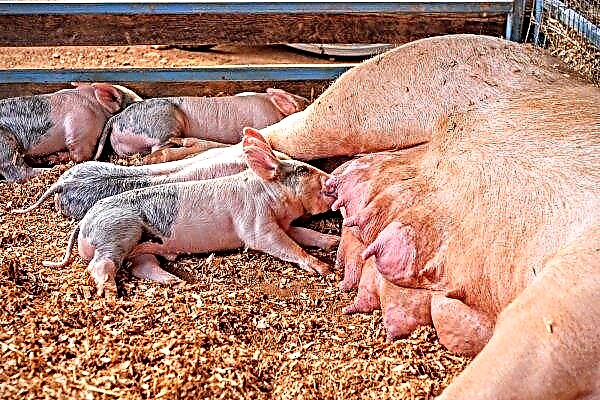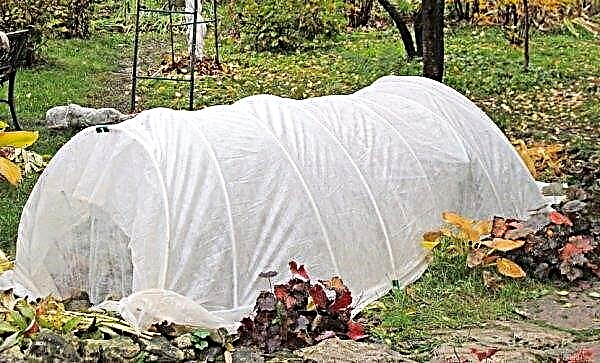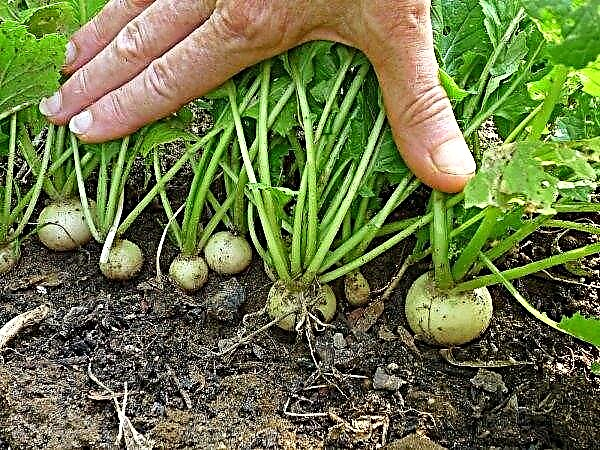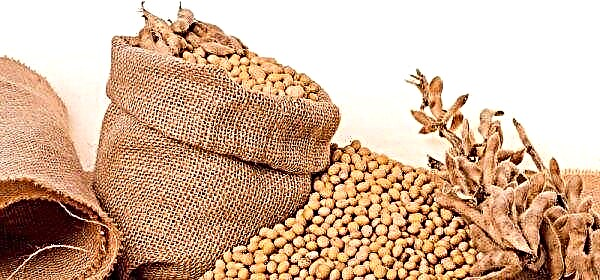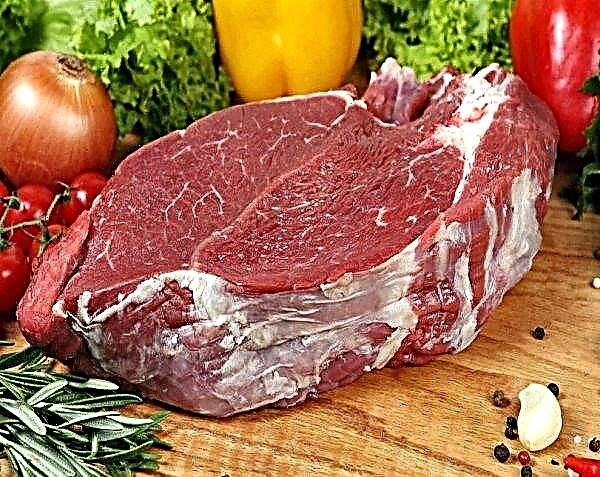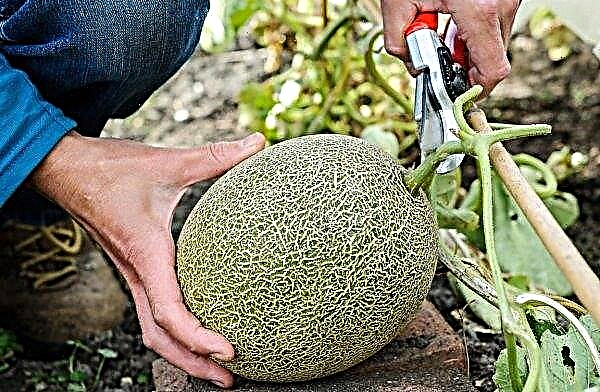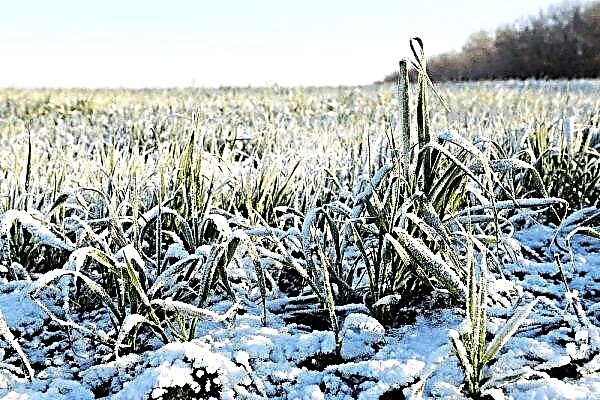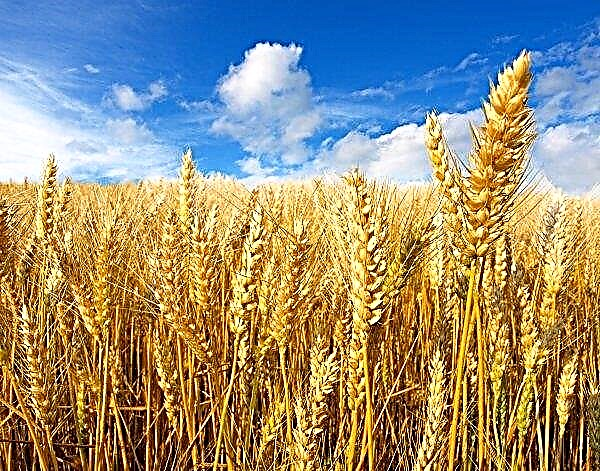Among the variety of varieties of apple trees, it is very easy to get confused. One of the common summer varieties is the Sugar Arcade sweet apple variety. About it and will be discussed later in the article.
The main hybrids of the variety
There are several representatives of the Arcade varieties, among which the Arcade is yellow or summer, the Arcade is pink and the Arcade is sugar. The differences between them are in yield, size and color of the fruit, as well as taste features.
Arcade Summer
This early ripe apple variety has the following characteristics:
- high tree with a round crown;
- frost-resistant (up to -35 ° C);
- enters the fruiting period for 4–5 years;
- ripening - the end of July or the beginning of August;
- stable yield, about 60 kg per tree;
- apple weight - about 70–80 g;
- apples are light yellow; the flesh is light and juicy;
- the fruits have a sweet-tart taste;
- short shelf life of products (about 1-2 weeks);
- susceptible to fungal diseases (especially scab);
- the products do not tolerate transportation and are stored, so it is impractical to grow on an industrial scale. Suitable for growing in private gardens.

Arcade Pink
Another representative of the early varieties, which has similar properties to the summer arcade, but also having some distinguishing features:
- smaller fruits (60–70 g);
- the skin is yellow, covered with stripes of pink colors;
- creamy pulp is very fragrant, has a sweet taste;
- the tree is compact, up to 3–3.5 m tall, with a spreading elliptical crown;
- the crop ripens in mid-July;
- winter hardiness is slightly lower than that of the Summer Arcade.

Description and characteristics of the variety Sugar Arcad
Unfortunately, the history of the origin of this summer variety is unknown. The mention of the Arcades is first encountered in the "Rules of Fruit Growing" by N. A. Krasnoglazov. In the 19th century, very sweet summer apples were called Arcades. Due to its good winter hardiness (up to -30 ° C), apple trees are successfully grown in the central, middle and northern regions.
Did you know? When advertising its iPhone, Apple talks about a character traveling around the states and planting apple trees. This is a real person named Johnny Appleseed (real name — John Chapman). In ancient times, land could be acquired if you started farming on it (planting 50 apple trees was one of the options). Johnny planted apple trees and, having received the land in possession, sold it, which he earned.
Appearance of a tree and properties of fruits
Arcade Sugar variety has the following features:
- the tree is powerful and medium-sized (about 4 m);
- the trunk and stems are covered with smooth brown bark;
- fruiting begins at 5–6 year;
- large apples (up to 120–160 g);
- the skin of the fruit is thin, greenish in color. Reaching technical maturity, acquires a whitish hue;
- the pulp is juicy and granular, has a pleasant aroma and sweet taste.
 The apple-tree of the Arcad variety is loved among gardeners. She is unpretentious in leaving and gives good fruits.
The apple-tree of the Arcad variety is loved among gardeners. She is unpretentious in leaving and gives good fruits.Pros and cons of the variety
- Apple tree Arcade sugar has a number of advantages:
- trees are tall;
- good frost resistance and resistance to lack of moisture;
- crop stability;
- excellent taste of the fruit;
- the shelf life is longer than other summer varieties (about 2-3 weeks);
- early ripening of the crop.
Due to the short shelf life of apples, summer varieties are not suitable for large-scale cultivation. However, they guarantee the early receipt of delicious and quality products, so the presence of one or two copies will be highly desirable in each garden.
- But, listing all the "pluses", it is necessary to mention the "minuses":
- average yield;
- tendency to defeat scab and powdery mildew;
- low portability and shelf life.
We recommend that you familiarize yourself with the summer varieties of apple trees:
Variety Productivity
Sugar arcade is not distinguished by high yields, but on the other hand, it ensures the stability of obtaining apple products. It is difficult to give exact numbers, as the number of apples depends on the age of the tree (5–6-year-old specimens give more), the region of growth (in the southern regions the figures are higher), as well as on the care and availability of pollinators. On average, about 5-7 fruit buckets can be obtained from one apple tree. The fruit has a pleasant taste.
The fruit has a pleasant taste.
Pollinators, flowering and fruiting times
Arcade belongs to those fruit crops that require pollinators to get good yields. This is necessary for several reasons:
- planting of one variety gives low yields or does not give them at all;
- plants of other varieties used for cross pollination increase productivity, provide a larger fruit size and their rich taste;
- it is important that pollinating varieties bloom at the same time as the pollinated specimens;
- a big “plus” will be the presence of an apiary nearby, since pollination with the help of bees almost doubles yields. Bees fly within a radius of 2-5 kilometers, so there will be no problems with pollination (the presence of pollinating trees nearby will not be needed).
Fruit ripening begins in late July. But since the early variety and fruits are not stored for a long time, they need to be harvested a little earlier than the onset of technical maturity, so they will lie a little longer. As for the taste, they become sweet before they are eaten, but overripe apples lose their taste, quickly crumble and deteriorate. Apple blossoms in early May, when stable heat is already established
Apple blossoms in early May, when stable heat is already established
Variety immunity to diseases
This culture has poor resistance to fungal diseases. Especially often she is struck by scab. Preventive treatments help prevent infection.
Features of planting young seedlings
Before planting a young apple tree, you need to decide on the planting time, as well as the place, and prepare everything you need for this process.
Important! It is better not to plant young seedlings in place of the old apple tree. Firstly, there is a weak supply of nutrients and you have to constantly apply fertilizers. And secondly, the pathogens of many diseases, as well as the larvae of insect pests, probably remained at this place.
Optimal dates for planting
In the warm southern regions, both landing in spring and autumn is allowed. In spring, this falls in the second half of April. Autumn planting should be carried out at least 3-4 weeks before the onset of persistent cooling (late October or early November). In cooler regions with cold winters, spring planting is preferable. This will enable the trees to take root and gain strength before wintering.
Selection and preparation of a landing site
The key points in choosing a place for planting different varieties of apple trees are practically the same:
- trees need a sunny place. Penumbra is also allowed, since, growing, the apple tree is able to win enough light for itself next to low plants. But a shaded place is unacceptable;
- You can choose an open elevated area. But for good pollination, the blown area is not quite suitable, therefore, nearby you can plant bushes (rowan, lilac or sea buckthorn) to protect against winds;
- undesirable close occurrence of groundwater, which can provoke rotting of the root system and death of the apple tree;
- it is preferable to choose areas with light loam;
- if you have a choice, then you do not need to plant in the place where fruit crops used to grow. It is advisable to sow such areas before planting with legumes or meadow herbs (2 years in a row).
The site for spring planting is being prepared in the fall, and for the autumn one - at least 2-3 weeks before planting.
Important! For autumn planting, the absence of foliage is mandatory (the tree prepared for winter), and for spring — the buds have not bloomed yet. Seedlings in containers are planted in the spring, when the threat of frost passes.
The following actions must be performed:
- Remove weeds and plant debris from the area.
- Dig a hole of approximately 80x80x80 cm. When placing several seedlings nearby, a distance of about 4-5 meters is observed.
- The upper fertile layer of the earth is mixed with rotted compost or peat (near a bucket), you can also add 0.5 kg of wood ash and a handful of superphosphate.
- The fertile mixture is placed on the bottom of the hole.
- If planting is carried out on a clay site, then the bottom is covered with drainage from stones to improve aeration, and if the site is sandy, the bottom is covered with clay to save moisture.
- It is desirable to mix clay soil with peat, compost or coarse sand, and a little more than usual compost or humus should be added to sandy soil.
- A peg is driven into the hole as a support.

How to plant a seedling on a site
When buying a young plant, several points should be considered:
- the purchase is preferable to carry out in specialized places (shops or nurseries);
- it is not advisable to purchase leafy seedlings (they were dug up early and were not prepared for winter);
- for annuals, the height should be within 120-130 cm, and for biennial plants - about 150 cm. Deviations from the standard are due to improper care;
- the bark should be light, without damage;
- root length - not less than 30 cm. Roots are moist, bright, healthy. The root system of a quality seedling should be branched and have many small roots;
- two-year-old seedlings must have at least 3 skeletal branches, annuals - still do not have branches;
- vaccination height - 7–8 cm;
- on each copy the presence of a tag with information about the variety is required.

Before long transportation or if seedlings cannot be planted immediately, the roots should be placed in a clay mixture, and then wrapped with a moist burlap.
With a well prepared and fertilized well in advance, the further landing technology is quite simple:
- The seedling is placed on an earthen tubercle located in the center of the hole.
- The root system is evenly distributed over the surface and sprinkled with earth.
- If the soil is dry, then watering is performed. Tamping the earth as you add it.
- Care must be taken not to cover the root neck with soil (it should be at ground level).
- Around the apple tree a small depression forms to retain water.
- About 2 buckets of water are poured under the seedling.
- The earth is mulched with peat or humus.
- The tree is tied to a support.
Video: instructions for planting an apple tree
Beginning gardeners when planting an apple tree need to remember a few tips:
- the root neck should be at or slightly above the ground. In a plant with a deepened root neck, the vegetation process slows down, and when it is high above the ground, the root system will dry out;
- the root neck is located on the border of the transition of the color of the cortex from green to light brown. Do not confuse it with the vaccination site located above;
- before planting, the roots can be soaked in a solution that stimulates the formation of roots (for example, "Kornevin"). Also, the root system can be placed in a clay mash. This will improve traction;
- do not abuse fertilizers. This leads to the death of some microorganisms, which make fertilizing the compounds necessary for plants.

Features of seasonal tree care
Having planted an apple tree, a gardener without experience needs to study the features of further plant care.
Irrigation and fertilizer application
A simple and effective method of fertilizing an apple tree is considered to be the sowing of a field-bearing shoot in the area of the trunk circle. But this method will justify itself only after a few years. Polevitsa improves the structure of the soil and makes it loose and nutritious for wood. Top dressing must be carried out in a timely manner and with the necessary substances. An overabundance of fertilizers, introduced later than necessary, can provoke a rapid growth of young shoots that will not get stronger in the cold and freeze in winter.
According to the seasons, apple trees need certain substances:
- in the spring nitrogen fertilizers are required. They are brought in at the beginning of spring;
- in the summer, fertilizing is applied, which favorably affects the growth and formation of fruits;
- phosphorus-potash fertilizers will increase the frost resistance of trees. They are brought in the fall.
 When dressing by watering or with dry substances, you need to know that they are introduced into the feeding zone (near-stem circle). Its borders begin half a meter from the trunk and end at the level of the end of the branches
When dressing by watering or with dry substances, you need to know that they are introduced into the feeding zone (near-stem circle). Its borders begin half a meter from the trunk and end at the level of the end of the branches
On average, apple trees require about 4 top dressings:
- in mid-April, about 3-4 buckets of humus or 0.5 kg of urea are scattered in the area of the near-trunk circle;
- before flowering, a composition of 250 g of superphosphate, 150 g of urea and 200 g of potassium sulfate, diluted in 50 liters of water, is introduced into the feeding zone. Before and after fertilizing, the apple tree is watered with water;
- the third top dressing is carried out in the fruit pouring phase. 120 g of nitrophoska and 3 g of sodium humate are dissolved in 30 l of warm water;
- in September, autumn feeding is carried out. The tree trunk is sprinkled with a composition of potassium sulfate and superphosphate (300 g each).
Video: feeding apple trees
During the growing season, an apple tree needs at least three plentiful irrigation:
- during flowering;
- at the beginning of July;
- in October before frosts.
 If there is hot, dry weather, then additional watering is carried out in the phase of fruit growth. Lack of moisture during this period can lead to crushing and falling of part of the fruit
If there is hot, dry weather, then additional watering is carried out in the phase of fruit growth. Lack of moisture during this period can lead to crushing and falling of part of the fruitCrown formation and trimming
Incorrect cropping or its absence creates many problems. Why is crown formation necessary:
- the number of fruit branches increases;
- the tree does not grow spontaneously, but forms a strong trunk and skeletal branches;
- the correct shape of the crown contributes to convenient care and harvesting;
- shaded areas are not formed, which makes it possible for apples to form on all fruit branches of the tree;
- the fruits become larger and the palatability improves;
- the branches are well ventilated, which serves as a prophylaxis of fungal diseases.

There are several types of pruning for specific purposes:
- forming trim carried out in the early years to create the correct crown of the plant. First, the central branch is shortened by about 20 cm. In the second year, the side branches are cut by 15 cm. In the third year, 2-3 strong shoots are left, and the remaining branches in a row are removed;
- support cropping carried out annually and consists in thinning the crown, removing vigorous (non-fruit) branches and adjusting the strength and direction of growth of the branches;
- sanitary pruning carried out in the autumn in order to remove diseased and dry branches (to prevent pests from settling on them);
- anti-aging practiced at 7-8 year of life of the tree. It consists in the removal of branches of five years of age and the shortening of young branches by 1/3 of the length.
Video: how to prune an apple tree
After pruning, you need to process the places of cuts with copper sulfate and cover them with garden varieties or varnishes based on varnish.
Did you know? There is evidence that his hobby helped US President George Washington cope with stress — pruning apple trees in the garden.
Preparing a tree for winter
Sugar arcade is a fairly frost-resistant variety, but for successful wintering it is necessary to carry out certain work:
- To clear the ground under the tree of weeds and carrion.
- In the near-stem circle, add the fourth top dressing (section on fertilizing).
- Make abundant watering.
- Open the trunk circle and mulch it with peat or humus.
- To carry out sanitary pruning and process the places of cuts.
- Trunks the limes, and spray the crown with 1% copper sulfate.
- To protect against rodents, wrap the trunk with a fine metal mesh and insulate with roofing material.
- In winter, snow can be additionally brought under the apple trees, which will serve as insulation and increase the amount of moisture in the spring.

Common problems when growing varieties
Representatives of this variety are most often affected by scab and powdery mildew, as well as pests such as spider mites, aphids, weevils and other parasites, therefore, such practices are practiced:
- with manifestations of powdery mildew, it is advisable to spray the apple trees with 3% Bordeaux liquid or with "Healthy Garden" or "Zircon" preparations, which also increase immunity to scab and most pests;
- “Chorus”, “Strobi” or “Gamair” are effective in combating scab;
- in case of pest infestation, Actellik, Fitoverm or Fundazol insecticides are used according to the annotation.
To use less "chemistry", you can apply the following methods:
- mint, elderberry, sage or rosemary planted nearby will help to resist the onslaught of ticks, moths and weevils. And in the fight against aphids effective plantings of tobacco, nasturtium or calendula;
- plantations of mustard, coriander or dill will attract enemies of insect pests. Such insects are ground beetles, lacewings, ladybugs and other useful insects;
- effective use of various traps. A tire filled with water, worn around the trunk, will become an obstacle for many pests. Hunting belts can be made of any fibrous material (for example, tow) by simply wrapping them with a trunk at a height of about 70 cm (the width of the belt is not less than 20 cm).

To limit the risk of various diseases and pests, it is advisable to carry out preventive measures:
- trim the crown;
- carry out spring spraying with a 1% solution of Bordeaux fluid;
- destroy the remains of plants affected by diseases;
- to clean the near-stem area from weeds, carrion and fallen leaves;
- dig up the trunk circle and sprinkle with a mulching layer;
- to clear the trunks of the old bark and whitewash them with lime;
- use hunting devices;
- disinfect garden tools;
- handle slices when cropping.
Let apples Arcade sugar is not stored for a long time, but this drawback is fully compensated by the honey taste of the fruit and the incomparable aroma. For this reason alone, these apple trees deserve to be grown in our gardens.

